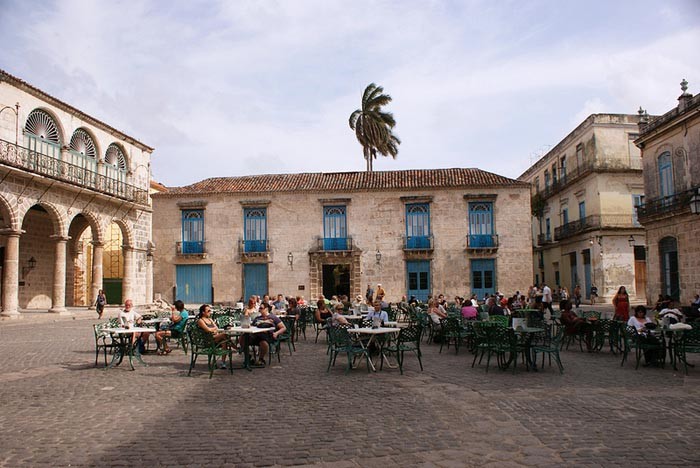L'Avana: Museo De Arte Colonial
museo ospitato dal 1963 nel più antico palazzo di Plaza de la Catedral
 L'Avana- Museo De Arte Colonial Plaza de la Catedral
L'Avana- Museo De Arte Colonial Plaza de la Catedral
Il Museo de Arte Colonial, situato sul lato opposto alla Catedral De La Habana, è ospitato dal 1963 nel più antico palazzo di Plaza de la Catedral, che un tempo era la residenza di Don Luis Chacon, il governatore militare di Cuba. Il palazzo era di proprietà della famiglia Valle Iznaga, una ricca famiglia possidente di piantagioni di zucchero, stabilimenti di trasformazione e una ferrovia. Il palazzo, risalente al 1744, è stato recentemente restaurato ed considerato Patrimonio dell’Umanità.
Il museo è composto da 12 sale, tra pian terreno e primo piano, dove sono esposti mobili in preziosi legni tropicali, lampadari e porcellane che furono possedute della borghesia e dell’aristocrazia avanera nei secoli XVIII e XIX. In queste sale troviamo anche una raccolta di vetrate e lucernai opere dell’artigianato creolo, i cosiddetti vitrales, delle “lunette” di vetro smaltato che abbellivano porte e finestre dei palazzi coloniali.
Quando si visita il museo ci si rende conto del tenore di vita che conducevano i nobili durante gli ultimi anni della dominazione spagnola. Alcune delle sale sono arredate come se fossero ancora abitate.
Gli oggetti esposti provengono dalle residenza coloniali della città e sono prevalentemente di origine europea.
Il cortile del museo è un meraviglioso posto per riposare e combattere il caldo e l'umidità di L'Avana.
Museum / Cultural center
Architectural style: Baroque
San Ignacio #61, e/ Empedrado y O’Reilly, Habana Vieja
museo-arte-colonial-02
museo-arte-colonial-01
On the southern side of the Plaza de la Catedral, exactly opposite the church, stands one mansion that definitely was left porchless. Perhaps this is why it seems older than its neighbours. This 17th-century building underwent successive reconstructions which altered its exterior to a great extent. The following century, it became the property of José Bayona y Chacón, the first Count of the House of Bayona who had to settle differences with the Marquis of Arcos who had closed the alley adjacent to the house because the passers-by bothered him, although this action was an infringement of the regulations in force, by which all plazas should have four exits. The court ruled in favour of the Marquis but gave the Count permission to build a porch, although this never came to fruition. The house of the Count of Bayona has a large inner courtyard surrounded by galleries, and a backyard. The panelled ceilings have elaborate carved designs made by the best master carpenters in the city. It is today the Museo de Arte Colonial with a wide collection of colonial art, including furniture, glasswork and porcelain.
Valuable representative pieces are exhibited here: 17th-, 18th- and 19th-century furniture; table linen and fans; colonial architectural elements, including wrought-iron grilles and railings, street lamps and lanterns, doorknockers (some of which are great examples of African-influenced art), doors (mainly used during the 19th-century in Neoclassical constructions), stone and marble sculptures for facades, and especially, the multicolored glasswork with stained-glass windows, inner doors, screens and ornamental partitions. Additionally, its collection includes 18th- and 19th-century glassware and dinner services used by aristocratic Cuban families in colonial times. Their diversity in style and design is a sign of the luxury and ostentation of a social class that used to imitate European fashion trends. Among the most important manufacturers are Limoges, Worcester, Royal Doulton, William Adams, Pickman and Sargadelos. The building’s coach house features several items in relation with the means of transportation used at the time, including metal- and leatherwork objects and a luxury quitrín (horse-drawn private passenger vehicle).

